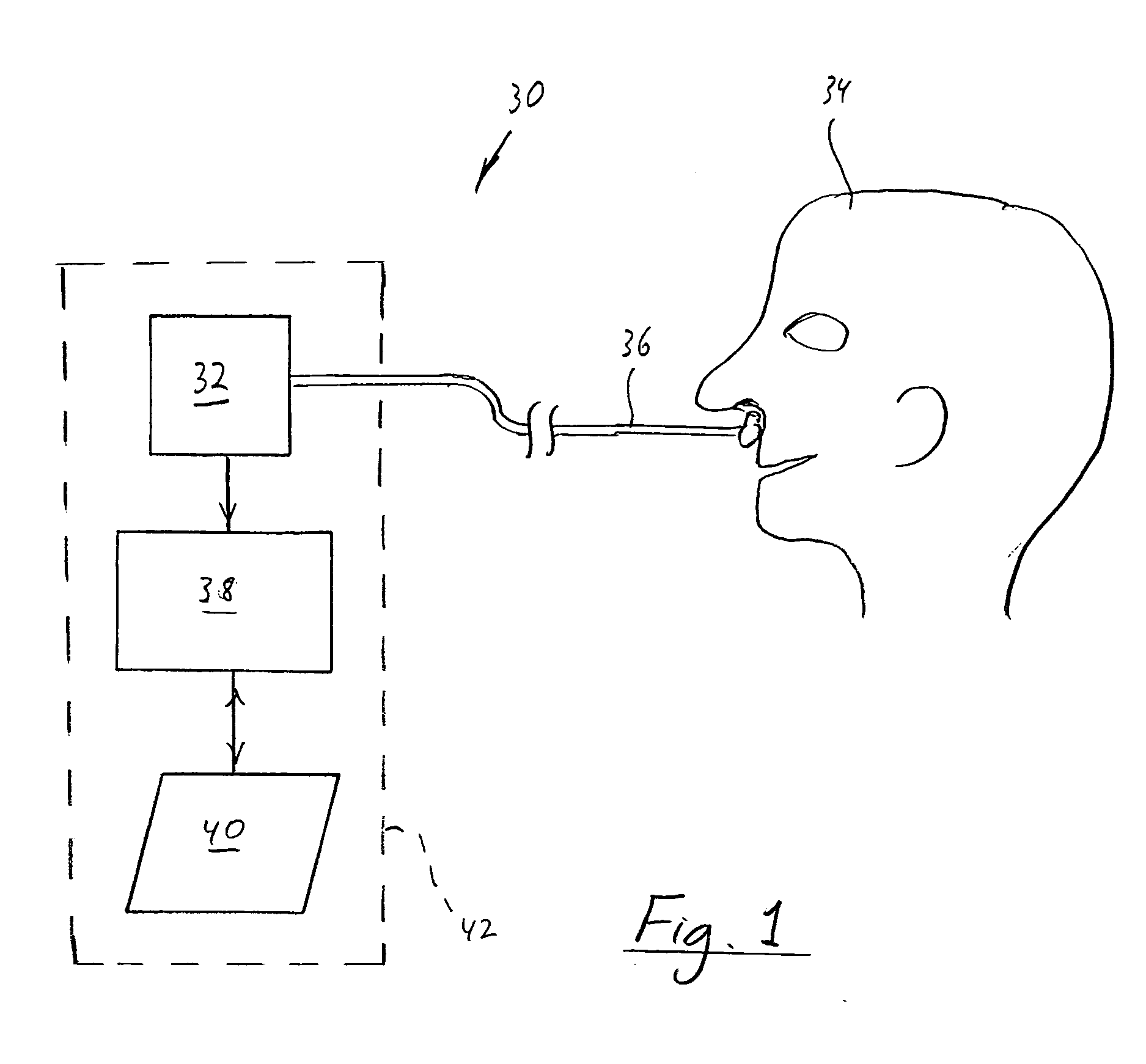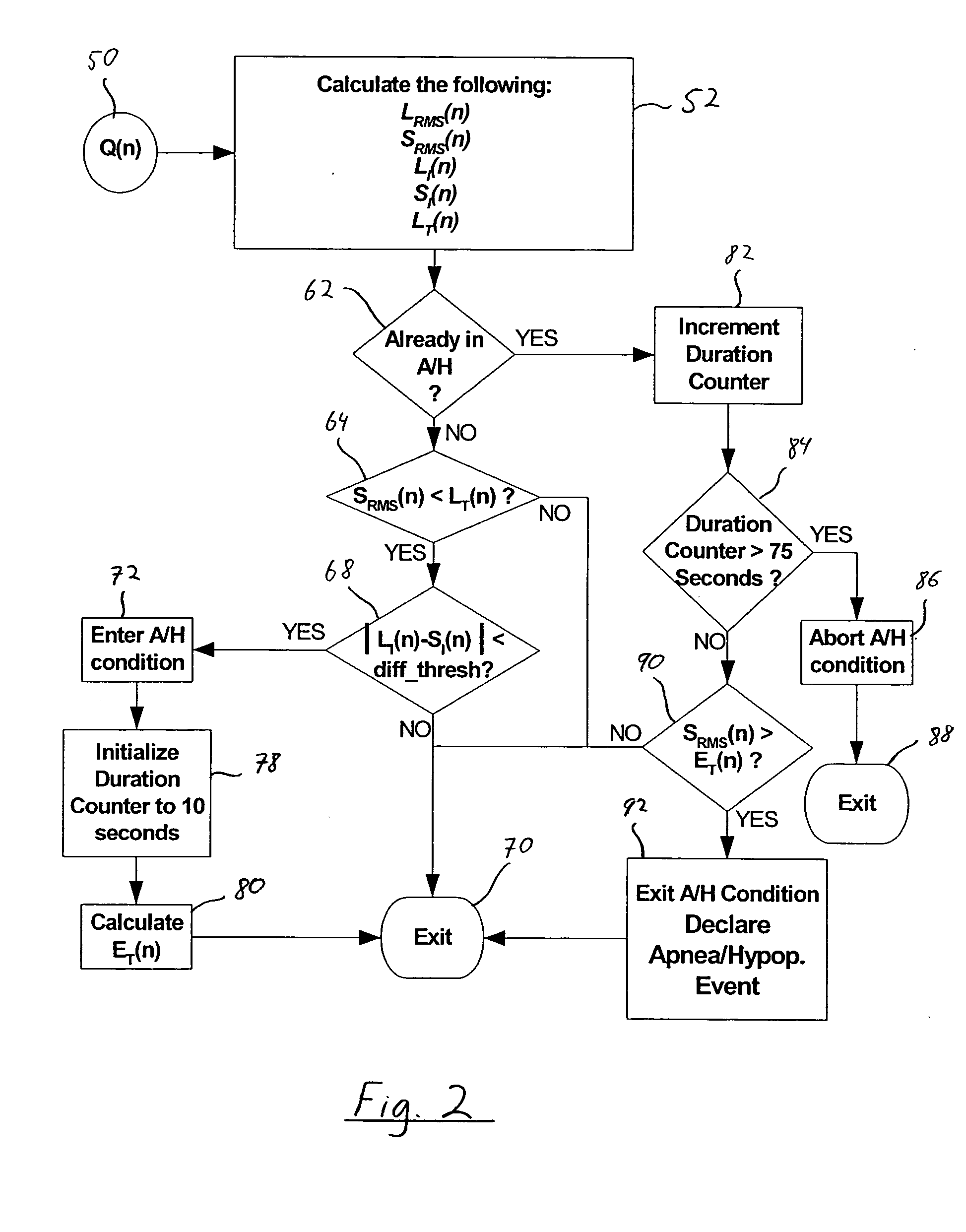Apnea/hypopnea detection system and method
a detection system and apnea technology, applied in the field of apnea/hypopnea detection system, can solve the problems of sleep apnea sufferers being at risk for excessive mortality, sleep fragmentation, and possible severe degrees of oxyhemoglobin desaturation, and achieve high-precision measurement of patient flow and accurate a/h detection
- Summary
- Abstract
- Description
- Claims
- Application Information
AI Technical Summary
Benefits of technology
Problems solved by technology
Method used
Image
Examples
Embodiment Construction
FIG. 1 schematically illustrates an exemplary embodiment of an apnea / hypopnea (A / H) detection system 30 according to the principles of the present invention. In its most basic form, detection system includes a sensor 32 in communication with the airway of a patient 34 to measure the flow of gas into and out of the patient, which is referred to as respiratory flow. In the illustrated embodiment, sensor 32 is a conventional flow sensor, such as a differential pressure sensor that communicates with the airway of the patient via a nasal cannula 36.
It is to be understood that the present invention contemplates using any conventional technique for detecting the patient's respiratory flow. For example, the present invention contemplates using the flow sensing technology taught in U.S. Pat. Nos. 6,017,315; 6,342,040; and 6,554,192 all to Starr et al. The present invention also contemplates using a conventional flow sensor, such as a pneumotach, coupled to the patient's airway via a patient...
PUM
 Login to View More
Login to View More Abstract
Description
Claims
Application Information
 Login to View More
Login to View More - R&D
- Intellectual Property
- Life Sciences
- Materials
- Tech Scout
- Unparalleled Data Quality
- Higher Quality Content
- 60% Fewer Hallucinations
Browse by: Latest US Patents, China's latest patents, Technical Efficacy Thesaurus, Application Domain, Technology Topic, Popular Technical Reports.
© 2025 PatSnap. All rights reserved.Legal|Privacy policy|Modern Slavery Act Transparency Statement|Sitemap|About US| Contact US: help@patsnap.com



